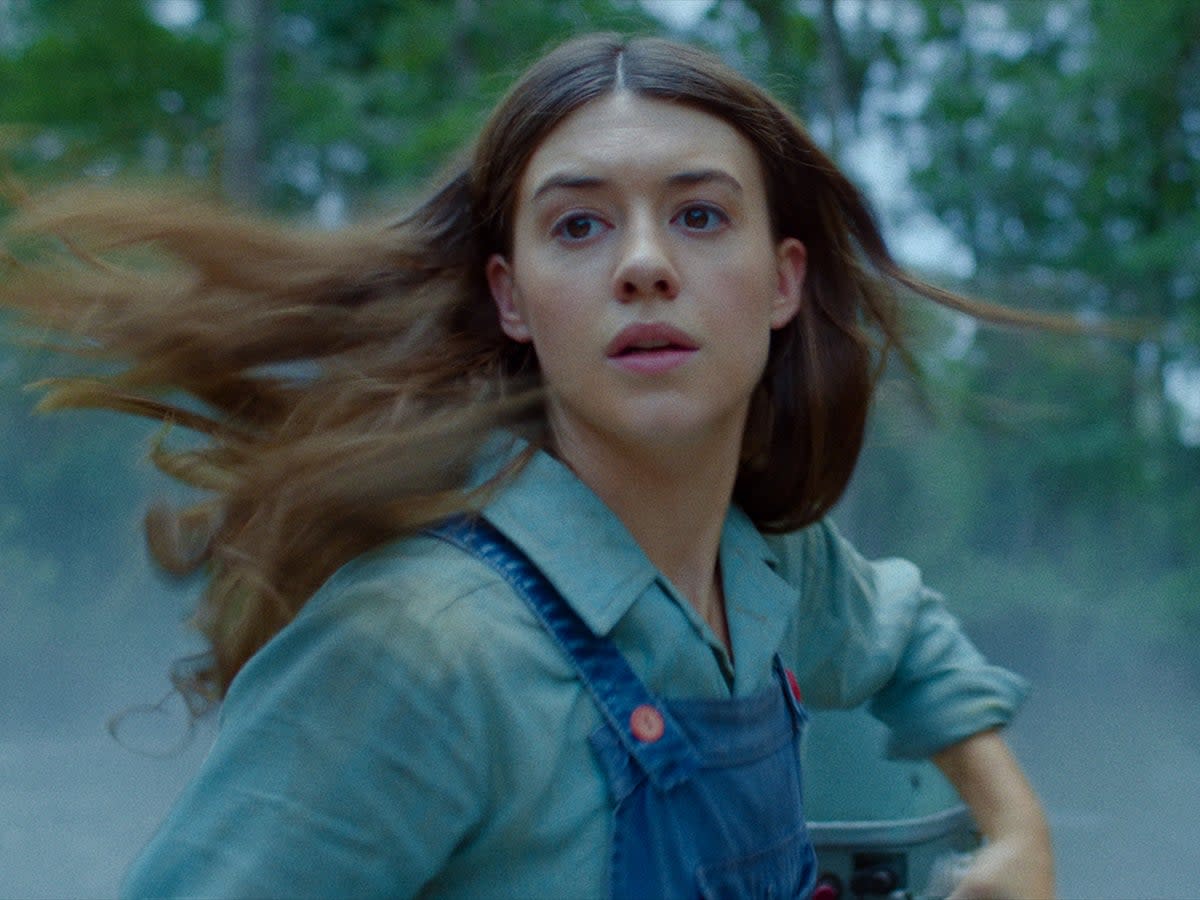Where the Crawdads Sing review: A glossy, Instagram-primed buffet of cinematic faux-feminism

- Oops!Something went wrong.Please try again later.
- Oops!Something went wrong.Please try again later.
Dir: Olivia Newman. Starring: Daisy Edgar-Jones, Taylor John Smith, Harris Dickinson, Michael Hyatt, Sterling Macer, Jr, David Strathairn. 15, 126 minutes.
Welcome to Hollywood – where even an active murder investigation isn’t enough to halt the adaptation of a best-selling book into a glossy, Instagram-primed buffet of cinematic faux-feminism. Where the Crawdads Sing, having sold more than 12 million copies since its publication in 2018, is the very definition of a literary sensation. It was featured as part of Reese Witherspoon’s book club. The actor now serves as the film’s executive producer.
Usually, you’d applaud that kind of sage entrepreneurship. But Delia Owens, who wrote Where the Crawdads Sing, is currently wanted for questioning by the Zambian authorities over a piece of ABC News footage that appears to show the shooting and killing by persons unknown of an unidentified poacher on a wildlife reserve overseen by Owens and her husband, Mark. And anyone who argues that these are merely irrelevant pieces of biography – unproven accusations that would sit more comfortably in the margins of a gossip magazine – is faced with the odd and uncomfortable reality that so much of Where the Crawdads Sing reads as a moral defence for nature’s laws superseding those set down by man.
“A swamp knows all about death, and doesn’t necessarily define it as tragedy, certainly not a sin,” the book’s prologue reads, along with the opening lines of Olivia Newman’s film. Its protagonist, Kya (Daisy Edgar-Jones), is steadfastly presented as someone whose tether to her marshland home, in South Carolina, is a talisman of unblemished authenticity. When the body of a local man, Chase Andrews (Harris Dickinson), is discovered out in the wilderness, everyone assumes that Kya, the reclusive “Marsh Girl” who’s been systematically abandoned by her entire family, must be responsible. She’s arrested and immediately thrown in jail.
Kya and Chase had some sort of dalliance, a distraction from the toils of her star-crossed, fairytale romance with childhood sweetheart Tate (Taylor John Smith, who is just as blandly pleasant as the role requires). And it’s that Nicholas Sparks-adjacent, impassioned but oh-so chaste love story that Newman and screenwriter Lucy Alibar seem most heavily invested in. I’m not at all surprised. Owens does have a certain, swoony turn of phrase – “being completely alone was a feeling so vast it echoed” is especially lovely – and scenes of Kya and Tate making out inside a tornado of leaves, or as a flock of seabirds tear their way up to the sky, are earnestly staged by Newman.
Does the fact the film largely ignores the book’s treatise on nature and virtue absolve it of all connections to Owens’s real-life controversies? It certainly doesn’t, on an artistic level, improve what’s already contained on the page. Newman’s vision of rural South Carolina is scrubbed so clean you might as well call it #swampcore – the Spanish moss looks bright and pristine, the flower petals on the water almost consciously arranged. Owens, at least, presented the wild as wild. Kya, too, is a young woman treated as if she were feral by those around her, while simultaneously dressing and grooming herself like an Instagram tradwife. There’s a scene where she walks into town, and everyone reacts in shock – this is the first time they’ve ever seen her in makeup and with her hair combed. She looks exactly the same as she does in every other scene in the film.
Where the Crawdads Sing, in short, treats rural poverty as if it were a desirable aesthetic, the ultimate way to reconnect with nature. That’s a problem not only for the obvious reasons. We hear David Strathairn’s kindly lawyer argue in court that Kya never had “the weakness of character” to murder Chase. It feels like we’re being asked to empathise with her less because she’s a social outcast and more because she’s a skinny, pretty, white girl. Edgar-Jones certainly doesn’t skimp on the doe-eyed naivete – post-Normal People and Fresh, there’s a real danger of her being boxed into these kinds of waif roles. Her marginalisation isn’t treated as much more than not being invited to sit at the cool kids’ lunch table.
It feels particularly farcical in the face of how the film’s sole Black characters are treated – a local couple, Jumpin (Sterling Macer Jr) and Mabel (Michael Hyatt), who own a store and care for the abandoned Kya with saintly generosity. Race, in a film set in Sixties South Carolina, does not factor. The film is rigorously insistent that Kya is the only person in her area code who has ever been persecuted in any way.
Again, if anyone had been paying attention to Owens’ past conservation activities, they might have drawn a connection between how patronisingly stereotyped the Black characters are in her book and past allegations of a racist attitude towards the people of Zambia (an acquaintance, in a New Yorker article published in 2010, characterised her views as “Nice continent. Pity about the Africans”). But, hey, who has time to check up on those things when there’s so much money to be made?
‘Where the Crawdads Sing’ is in cinemas from 22 July

